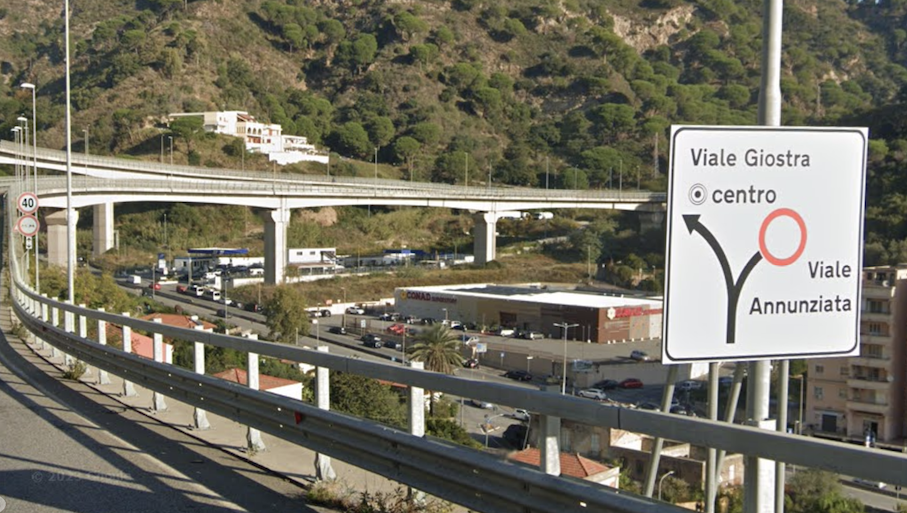Italy (Brussels Morning) Never opened, unusable, dangerous: the very harsh relationship on the ramps between the Giostra junction and the Annunziata tunnel.
Problems that “compromise the correct functioning of the deck, especially under seismic actions”. A document calls into question the construction and maintenance of the “O” and “P” viaducts, which have never been used since completion. What does it reveal that is explosive?
Deformation of the plates, decks leaning on one side, support not positioned correctly, rust, design mix-ups, gross errors in the works: the “O” and “P” viaducts of the Giostra junction, i.e. the ramps (never put into operation) which should connect the San Jachiddu tunnel directly with the junction, without the need to enter Viale Giostra Alto and then return, they are structurally defective and present critical issues that “cast strong doubt on the correct functioning of the support and retention devices for the transversal seismic actions and longitudinal and the conditions of displacement and correct load distribution of the deck”. In a word, they are unusable: and, in fact, six years after the first inauguration of the Giostra junction, they have never been opened to transit. For security reasons and doubts about their implementation.
This is certified by a report commissioned by the municipality of Messina in February 2020 from a specialized external company to evaluate the possibility of being able to open them. A possibility that was categorically excluded from the inspection result. “Some of these problems can be traced back to normal deterioration and therefore can be resolved with ordinary and extraordinary maintenance interventions, while others denote incorrect functioning of the structure, with the need for interventions to make the viaduct capable of withstanding traffic loads and seismic actions”, explained the Municipality at the time, underlining a series of anomalies identified which “compromise the correct functioning of the deck, especially under seismic actions”. What anomalies are we talking about exactly?
There are those resulting from time, such as rust and deformation of the plates, but also those resulting from errors during the construction phase, such as assembly plates not being removed supports not being positioned correctly, or work that does not comply with the design indications. “Defects” that had not emerged from an initial visual inspection, showed that there were no apparent problems with the structure. Apparent. Then he dug deeper.
First of all, we read in the report drawn up after the verification by the company FIP MEC, which specializes in support devices and joints for bridges, “The support devices are affected by the signs of aging, for which they have partly been attacked by rust, not having in recent years there had been no ordinary or extraordinary maintenance, given the fact that the viaducts were not open to traffic”. Furthermore, the investigations revealed “deformations of the plates, even of several millimeters, which indicate an incorrect stress on the support”. But there is much more. For example, problems resulting from non-compliance with the construction procedure. What does the report say about this?
“In some supports, there are assembly and transport plates which had to be eliminated since, otherwise, they do not allow the correct functioning of the support which is blocked”, it was highlighted in 2020, as was the fact that it was noted that “The design supports were exchanged on the P3 pier of the two viaducts,” explains the report.
Again, the report underlines how the supports do not comply with the design indications: in fact, the project had envisaged that on some structural elements, there would be longitudinal unidirectional supports, while on others longitudinal unidirectional supports with orientable guide (special type): ” This difference was foreseen because, since the deck was partly curved, the direction of the supports had to converge towards the fixed point and therefore the support had to be able to self-adjust to position itself in the correct direction. The supports installed are all of the simple unidirectional types and therefore do not have an orientable guide and therefore do not comply with the design requirements”.
Finally, the other problems encountered are on the longitudinal retainers (some show signs of rust, others “are blocked by concrete castings presumably carried out at the time of construction and by the presence of bituminous conglomerates”), on the transversal seismic retainers on the deck (“they are present but often not in contact with the restraints present on the pier and in any case the neoprene contact pads are deteriorated or not in position – we read in the report – often the deck is completely supported on one side and leaves a considerable space on the opposite side), as well as deriving from the presence of an upper counterbeam, “which puts the upper support plate in contact with the deck. This counter beam, which also takes on decimetric thicknesses, is not present in the project, it is not known whether it is reinforced or not, and above all it sometimes presents vertical or horizontal cracks or cracks between the connection with the viaduct which lead one to suspect that it is filling with poured mortar to adjust the heights of the supports”.
A disaster that has prevented even one car from being allowed to pass since 2017, the year the Giostra junction was inaugurated. And thank goodness, given the results of the report. The problem, however, begins much earlier. The “O” and “P” viaducts were designed in 1998 and were subsequently built by the group of companies Torno srl, Gitto srl, Vinci Antonino: the works, we read in a resolution of the municipality of Messina, were directed by Beppe Rodriquez (who was also the designer of the Giostra junction) and statically tested by the engineer Ferdinando Corriere, who issued the testing act on 31 August 2009.
Paradoxically, and by pure coincidence, the two viaducts were never opened to transit after having been built, because the ramps connecting to the motorway viaducts had not yet been completed, the subject of a separate contract and built by a different company after the takeover of Anas in the management of the contract and supervision of the works in 2010. from that date onwards, during the works it was necessary to introduce some variations to adapt the works to the new technical regulations in the seismic area: however, no one had thought of doing this on the two slip roads.
A 2020 council resolution, to which the report was attached, also mandated the RUP to report to the competent authorities any responsibilities that had emerged “on the part of the subjects who conducted, executed and tested the works in question, regarding the problems found on the structures”. The sole manager of the works who was appointed by the municipal administration just three days ago, identified in the figure of Silvana Mondello. It will be up to her to figure out how to proceed to fix things.
Click the following link to read the whole article: press here.



